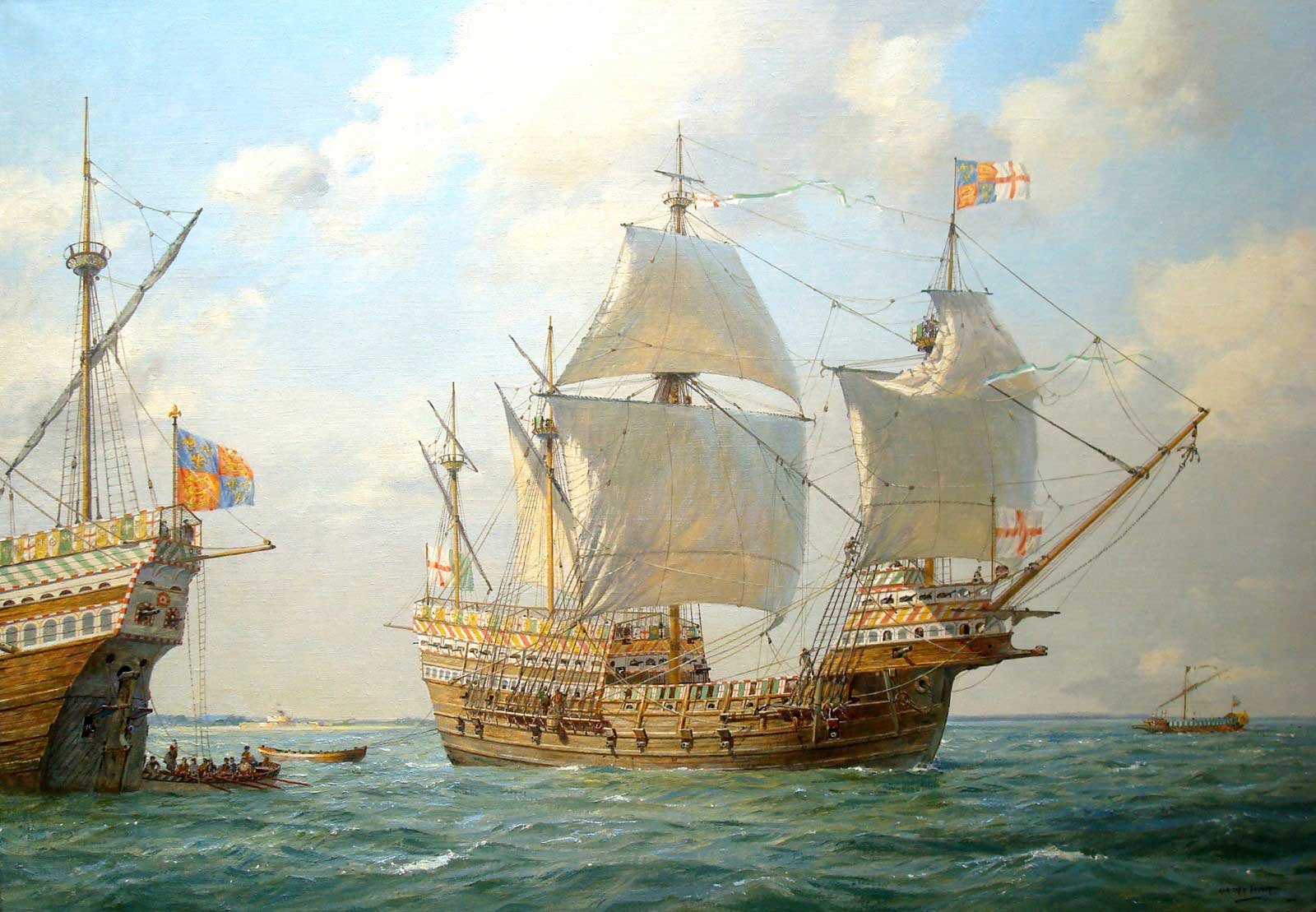In 1522, just two years after the Field of the Cloth of Gold, England and France were at war once again, with Henry siding with Charles V of Spain, the nephew of Queen Katherine. In May 1522, Charles arrived in England. At 2pm on the 30th May 1522, the two kings boarded and inspected the Henry Grace a Dieu and the Mary Rose; Henry was showing off his favourite ships.
Shortly afterwards, the fleet set off from Southampton. Lord Thomas Howard, now the Earl of Surrey, decided to use the Mary Rose as his flagship; the superior sailing of the Mary Rose trumped the size of the Great Harry. Surrey successfully attacked the Breton port of Morlaix on 1st July 1522 but the supplies that he requested in order to take Brest never arrived. He had no choice but to return to Portsmouth. The Admiral was redeployed and given command of a land force at Calais at this point; the Vice-Admiral, Sir William Fitzwilliam, also chose the Mary Rose to be his flagship. The Mary Rose had now been the preferred ship of Sir Edward Howard, Lord Thomas Howard and Sir William Fitzwilliam.
The second war with France was mostly a collection of skirmishes, with very little actually happening until 1525 and the Battle of Pavia, which ended the war. The English, however, had nothing to do with Pavia, which saw King Francis captured by Spanish forces. The fleet does not seem to have been mobilised at all throughout 1525 and the Mary Rose was moved to Deptford that summer to be recaulked.

